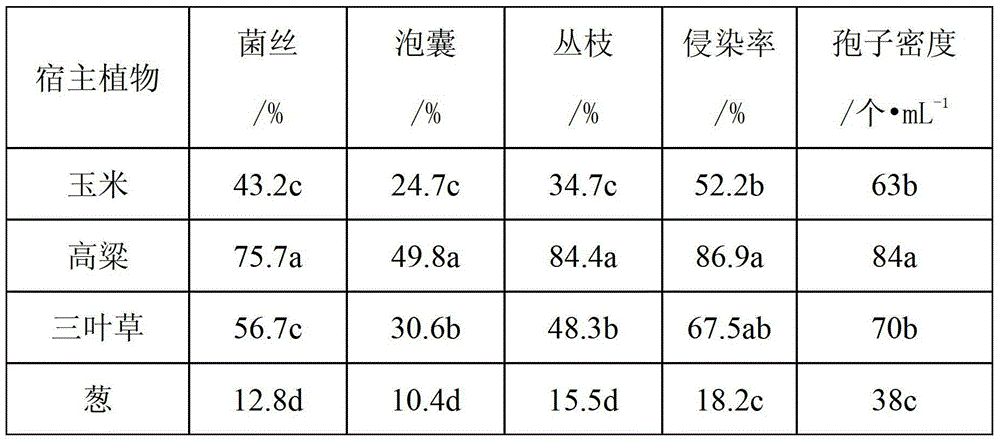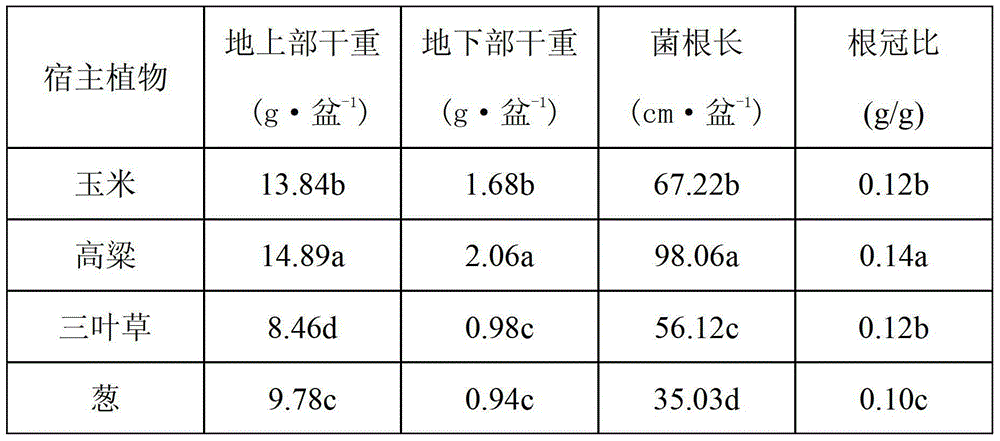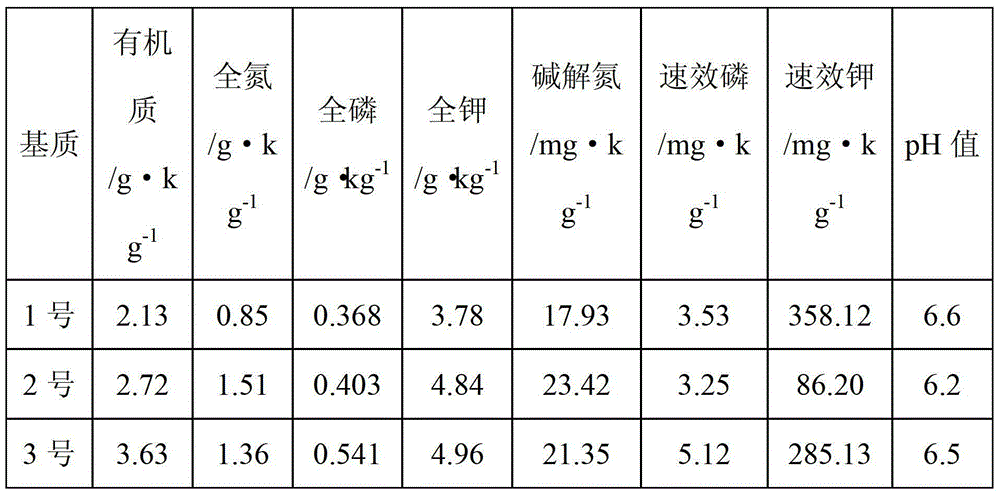Propagation method of fir woodland predominant endomycorrhizal fungi
An endophytic mycorrhizal fungus and woodland technology, applied in the field of forest protection, can solve the problems of high cost, limited application in large areas, time-consuming and labor-intensive problems
- Summary
- Abstract
- Description
- Claims
- Application Information
AI Technical Summary
Problems solved by technology
Method used
Image
Examples
Embodiment 1
[0015] Screening of host plants
[0016] Before inoculation, the sand matrix (volume ratio 1:1) was intermittently sterilized twice at 100°C. A plastic pot with a volume of 5 L was used as a culture container, and it was sterilized with potassium permanganate before inoculation. Seeds with 10% (volume fraction) of H 2 o 2 Sterilize, accelerate germination at 28°C, and sow when 70% of the seeds are white. When sowing, each pot is first filled with 2.5kg of matrix containing Glomus mosei spores. Each host plant was replicated 3 times, with a total of 12 pots. One week after emergence, the seedlings were settled, 15 plants of corn and sorghum, 20 plants of green onion and clover in each pot, watered and Hoagland’s nutrient solution as needed during the test period, harvested three months later, and samples were taken for determination of relevant indicators.
[0017] The 4 kinds of host plants tested could co-exist normally with Glomus mosei. However, the effects of different
Embodiment 2
[0028] Screening of Culture Substrate
[0029] The matrix was sterilized twice at 100°C intermittently before inoculation. After the most suitable host plants screened in the above experiments were sterilized, the sowing method was the same as above, and each culture medium was repeated 3 times, with a total of 12 pots. Dingmiao 1 week after emergence. During the test period, water and Hoagland's nutrient solution were used as needed, harvested three months later, and samples were taken for determination of relevant indicators.
[0030] Sand vermiculite mixture (No. 1): sand: vermiculite = 3:1 (volume ratio). Sand-soil mixture (No. 2): The volume ratio of sand to soil is 3:1. Sand vermiculite soil mixture (No. 3): sand: vermiculite: soil = 2:1:1 (volume ratio). The nutrient content of different substrates is different (Table 3), and it seems that the nutrients of each substrate are relatively poor in general. The main differences are in organic matter, available phosphorus a
Embodiment 3
[0043] The screening of embodiment 3 cultivation density
[0044] Inoculate with the screened optimal host plants and culture substrates, set the sowing density of 10 plants / pot, 20 plants / pot, 40 plants / pot and 60 plants / pot, and repeat 3 times for each treatment. The sowing method is the same as above, and the seedlings are settled 1 week after emergence. Watering and Hoagland's nutrient solution were performed as needed during the experiment. Harvest three months later and take samples for determination of relevant indicators.
[0045] Cultivation density can affect the growth of Glomus mosei. Different planting densities have significantly different effects (see Table 6).
[0046] Table 6 Effects of different cultivation densities on the growth of Glomus mosei
[0047]
[0048] Note: The data in the table are average values; different letters after the data in the same column indicate significant differences at P<0.05 level by Duncan’s method.
[0049] It can
PUM
 Login to view more
Login to view more Abstract
Description
Claims
Application Information
 Login to view more
Login to view more - R&D Engineer
- R&D Manager
- IP Professional
- Industry Leading Data Capabilities
- Powerful AI technology
- Patent DNA Extraction
Browse by: Latest US Patents, China's latest patents, Technical Efficacy Thesaurus, Application Domain, Technology Topic.
© 2024 PatSnap. All rights reserved.Legal|Privacy policy|Modern Slavery Act Transparency Statement|Sitemap



